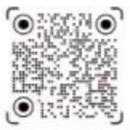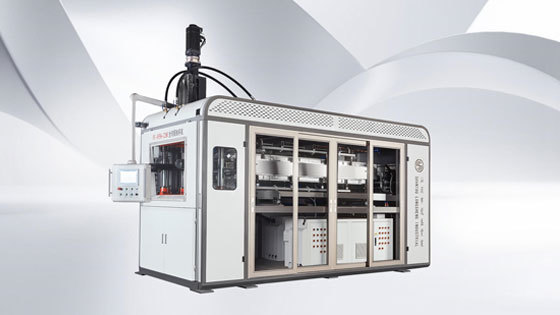The Revolutionary Impact of Advanced Plastic Thermoforming on Modern Product Design
Time: 2025-06-15 13:40:03.157
The Revolutionary Impact of Advanced Plastic Thermoforming on Modern Product Design Table of Contents 1. Introduction to Plastic Thermoforming 2. What is Advanced Plastic Thermoforming? 3. Benefits of Advanced Plastic Thermoforming in Product Design 4. Applications of Advanced Plastic Thermoforming in Various Industries 5. Design Freedom and Innovation through Thermoforming
The Revolutionary Impact of Advanced Plastic Thermoforming on Modern Product Design
Table of Contents
- 1. Introduction to Plastic Thermoforming
- 2. What is Advanced Plastic Thermoforming?
- 3. Benefits of Advanced Plastic Thermoforming in Product Design
- 4. Applications of Advanced Plastic Thermoforming in Various Industries
- 5. Design Freedom and Innovation through Thermoforming
- 6. The Role of Advanced Plastic Thermoforming in Sustainable Product Design
- 7. Future Trends in Plastic Thermoforming Technology
- 8. Conclusion: Embracing Advanced Thermoforming for Future Products
- 9. FAQs about Advanced Plastic Thermoforming
1. Introduction to Plastic Thermoforming
In the ever-evolving landscape of manufacturing and product design, **advanced plastic thermoforming** has emerged as a pivotal technique that enhances not only the efficiency of production but also the quality and innovation of the final products. This method allows for versatility in design and material use, making it an indispensable tool for industries aiming to remain competitive and responsive to market demands.
2. What is Advanced Plastic Thermoforming?
**Advanced plastic thermoforming** is a manufacturing process that involves heating plastic sheets until they become pliable and then conforming them to a specific shape using molds. This process can be broken down into several key stages:
2.1 Heating
The initial step involves heating the plastic sheet evenly to a temperature that allows it to become soft without melting. Precision in this stage is crucial; excessive heat can lead to material degradation, while insufficient heating may result in poor forming.
2.2 Forming
Once the plastic reaches the desired temperature, it is formed over a mold to create the desired shape. This can involve a vacuum, pressure, or a combination of both to ensure the plastic conforms accurately to the mold's contours.
2.3 Trimming
After cooling, the formed plastic is trimmed to meet specific design specifications. This process ensures that any excess material is removed, resulting in a finished product ready for further assembly or use.
3. Benefits of Advanced Plastic Thermoforming in Product Design
The advantages of integrating **advanced plastic thermoforming** into product design are manifold. Below are some of the most compelling benefits:
3.1 Cost Efficiency
Thermoforming can significantly reduce production costs compared to traditional methods, such as injection molding. The elimination of complex tooling for intricate designs translates to a lower initial investment and reduced overall production costs.
3.2 Design Flexibility
With thermoforming, designers can explore a broader range of shapes, sizes, and textures. This flexibility allows for innovative designs that can be tailored to meet specific consumer needs and preferences.
3.3 Speed of Production
The thermoforming process is generally quicker than many alternative manufacturing methods. Fast production times enable companies to bring products to market more rapidly, which is essential in today’s fast-paced business environment.
3.4 Lightweight Products
Advanced thermoforming techniques often result in lightweight products without compromising structural integrity. This is particularly advantageous in industries like automotive and aerospace, where reducing weight can lead to improved performance and fuel efficiency.
4. Applications of Advanced Plastic Thermoforming in Various Industries
**Advanced plastic thermoforming** finds applications across a multitude of industries, each benefiting uniquely from this innovative process.
4.1 Automotive Industry
In the automotive sector, thermoformed components are extensively used for interior panels, dashboard components, and various trim pieces. The ability to create lightweight yet durable parts contributes to overall vehicle efficiency.
4.2 Packaging Solutions
Thermoforming has revolutionized packaging, particularly in the food industry. Clear trays, clamshells, and blister packs are just a few examples of how this technology provides both functionality and aesthetic appeal, enhancing product visibility while ensuring protection.
4.3 Medical Devices
In healthcare, the precision of thermoforming is critical for producing sterile packaging for medical devices and equipment. The process ensures that products are safely contained, preserving their integrity before use.
4.4 Consumer Products
From household items to toys, thermoformed plastics are prevalent in consumer goods. The ability to achieve vibrant colors and intricate designs makes thermoforming a popular choice among manufacturers aiming to attract consumers.
5. Design Freedom and Innovation through Thermoforming
The **design freedom** afforded by advanced plastic thermoforming is a game-changer for innovators and product developers. Here’s how:
5.1 Customization Opportunities
With thermoforming, customization becomes straightforward. Companies can create tailored solutions that meet unique customer demands, thus fostering stronger relationships and enhancing brand loyalty.
5.2 Complex Geometries
Thermoforming allows designers to construct complex geometries that might be challenging to achieve using other methods. This capability enables the production of aesthetically intricate products that stand out in a crowded marketplace.
5.3 Integration of Functions
As designers explore new possibilities, they can integrate multiple functions into a single component, reducing the need for assembly and contributing to a more streamlined manufacturing process.
6. The Role of Advanced Plastic Thermoforming in Sustainable Product Design
Sustainability is increasingly becoming a crucial factor in product design. Advanced plastic thermoforming plays a significant role in promoting eco-friendly practices:
6.1 Material Efficiency
The thermoforming process typically generates less waste compared to other manufacturing methods, as it often utilizes sheets of material that can be precisely controlled and recycled.
6.2 Recyclable Materials
Many thermoformed products are made from recyclable plastics, which align with the growing consumer demand for sustainable alternatives. This attribute not only helps the environment but also enhances brand reputation.
6.3 Reduced Energy Consumption
Advancements in thermoforming technology have led to a reduction in energy consumption during production. This not only lowers operational costs but also minimizes the carbon footprint associated with manufacturing.
7. Future Trends in Plastic Thermoforming Technology
As technology continues to advance, the future of **plastic thermoforming** looks promising. Here are some key trends to watch:
7.1 Smart Manufacturing Integration
The incorporation of **smart technologies** and automation is set to revolutionize the thermoforming landscape, enabling real-time monitoring and optimization of the production process.
7.2 Increased Use of Bioplastics
As environmental awareness grows, the use of bioplastics in thermoforming is expected to rise. Manufacturers will likely explore sustainable alternatives that do not compromise quality or performance.
7.3 Enhanced Design Software
The evolution of design software will further enable designers to push the boundaries of creativity while ensuring feasibility in manufacturing processes.
8. Conclusion: Embracing Advanced Thermoforming for Future Products
In conclusion, the impact of **advanced plastic thermoforming** on product design is profound and far-reaching. By providing unparalleled design flexibility, enhancing sustainability practices, and offering cost-effective solutions, this innovative technology is poised to redefine how products are conceived and developed across various industries. Embracing advanced thermoforming not only enhances product quality but also fosters a culture of innovation that will drive future success.
9. FAQs about Advanced Plastic Thermoforming
What materials are commonly used in advanced plastic thermoforming?
Common materials include ABS, PET, polycarbonate, and PVC, each offering unique properties suitable for various applications.
How does thermoforming compare to injection molding?
Thermoforming is generally more cost-effective for low to medium production volumes, while injection molding is ideal for high-volume production of complex parts.
Can thermoforming be used for intricate designs?
Yes, thermoforming allows for the creation of detailed and complex designs, making it ideal for a variety of applications.
What are the limitations of advanced plastic thermoforming?
Limitations include size restrictions based on the available mold and the potential for surface imperfections if not properly managed during production.
Is advanced plastic thermoforming environmentally friendly?
Yes, it often utilizes recyclable materials and generates less waste compared to many other manufacturing processes, aligning with sustainable practices.
Related News
The Revolutionary Impact of Advanced Plastic Thermoforming on Modern Product Design
The Revolutionary Impact of Advanced Plastic Thermoforming on Modern Product Design Table of Contents 1. Introduction to Plastic Thermoforming 2. What is Advanced Plastic Thermoforming? 3. Benefits of Advanced Plastic Thermoforming in Product Design 4. Applications of Advanced Plastic Thermoforming in Various Industries 5. Design Freedom and Innovation through Thermoforming
Exploring the Best Bioplastic Manufacturing Machines for Sustainable Production
Bioplastics are gaining traction as an eco-friendly alternative to traditional plastics, driven by the need to reduce environmental impact and enhance sustainability. The manufacturing of bioplastics requires specialized machinery designed to process renewable resources and create materials that are biodegradable or compostable. This article explores important aspects of the best bioplastic manufa
The Transformative Impact of Automation on Modern PE Extruder Machines
The Role of Automation in Modern PE Extruder Machines Table of Contents Introduction to PE Extruder Machines Understanding Automation in Extrusion Processes Benefits of Automation in PE Extruder Machines Increased Efficiency Enhanced Quality Control Cost-Effectiveness and Resource Management Technological Advancements in Automa
Discover the Essential Insights on Pet Sheet Extruder Machine Suppliers
In the realm of plastic processing machinery, the importance of finding a reliable pet sheet extruder machine supplier cannot be overstated. The process of manufacturing PET (Polyethylene Terephthalate) sheets is gaining traction due to its versatility and sustainability. PET sheets are widely used in various applications, including packaging, food containers, and even in the construction industry
Contact Us
China Shantou Longsheng Industry Co., Ltd.
Address:No.44 Xigang Road, Shantou, Guangdong, China
Tina:+86-13802712827
Shiela:+86-15362312727
E-mail: longshengmachine@gmail.com



TikTok





